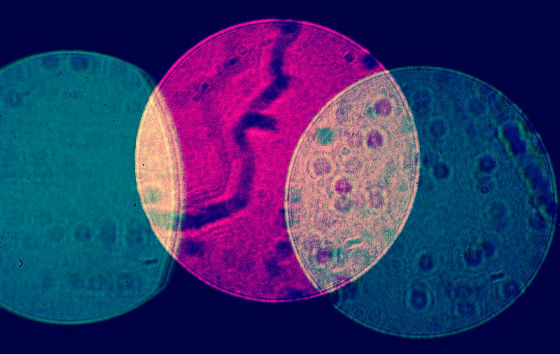Research on bacteria that absorbs carbon dioxide and produces energy advances

ByBear On Kit
A research team at Harvard, who was doing research to generate energy using artificial leaves and carbon dioxide absorbing bacteria, by manipulating bacterial genesEnergy efficiencySuccessfully to 10%. Energy can be generated from sewage even with sunlight, water and carbon dioxide, so it is expected to be used in places where electricity is not being supplied.
Harvard Scientist Engineers Bacterium That Inhales CO2, Produces Energy - Forbes
http://www.forbes.com/sites/jeffmcmahon/2016/05/29/harvard-scientist-engineers-a-superbug-that-inhales-co2-produces-energy/

Plants produce carbohydrates from photosynthesis, sunlight, water and carbon dioxide, but this is a method of energy conversion / energy storage formulated over a billion years ago. Professor Daniel G. Nocera of Harvard University in 2008 developed an "artificial leaf" which decomposes water into hydrogen and oxygen when sunlight is applied. Natural gas is usually used as a material for generating hydrogen as a fuel, but Professor Nocera's artificial leaf was noticed as being groundbreaking of water as a raw material.
After that, Professor Nocera developed a research on artificial leaves, supplied hydrogen to the bacteria present in artificial leaves, and bound hydrogen and carbon dioxide to the bacteria,2-propanolWe started research to generate. Initially, the goal is 5% energy efficiency, which is five times that of photosynthesis in artificial leaves, and when Professor Nocera announced the research content in 2015, many researchers gave "practical use up to the industrial level It will be difficult to convert it "was raised.
You can understand how to generate energy from artificial leaves, bacteria, sunlight, carbon dioxide by reading the following article.
Technology to generate liquid fuel from solar energy using artificial leaves and bacteria has appeared - GIGAZINE

However, according to what was announced at the University of Chicago in April 2016, Professor Nocera has realized 10% energy efficiency using artificial leaves, bacteria and sunlight.
Professor Nocera consume hydrogen and carbon dioxide for 18 monthsAdenosine triphosphateWe have studied bacteria called Ralstonia eutropha to manipulate genes so that bacteria produce 2-propanol, which is one type of alcohol, rather than adenosine triphosphate. This made it possible to produce biomass with energy efficiency of 10.6% and alcohol with energy efficiency of 6.4% if only artificial leaves were able to produce hydrogen as fuel as 1% energy efficiency is.
One liter reactor filled with bacteria of Professor Nocera etc. absorbed 500 liters of carbon dioxide in the air per day. We will introduce 237 liters of carbon dioxide from the atmosphere for energy production every kilowatt hour. Also, if the generated alcohol fuel is burned, most of the absorbed carbon dioxide will return to the air. Professor Nocera says, "This technique adsorbs carbon dioxide in the air, but as you burn the refined fuel, carbon dioxide is released again into the air,Carbon neutralIt is not something that solves all the carbon dioxide problems. "

ByMathias Pastwa
Since artificial leaves can produce hydrogen even from urine and sewage water and carbon dioxide consumed by bacteria is present in the atmosphere, this technology is expected to be utilized in places where electricity supply is insufficient . Professor Nocera considers renewable energy from artificial leaves and bacteria to have particularly great influence in India where population is high and electric infrastructure is not well established and now it is to convey technology to research institutes in India etc. We are in the process of seeking investors who will provide the funds.
The experiment succeeded on Tuesday, May 17, 2016 (Tuesday), although the contents of this research has not been officially announced yet, it is expected to be published in science magazines soon.
Related Posts:
in Science, Posted by darkhorse_log






